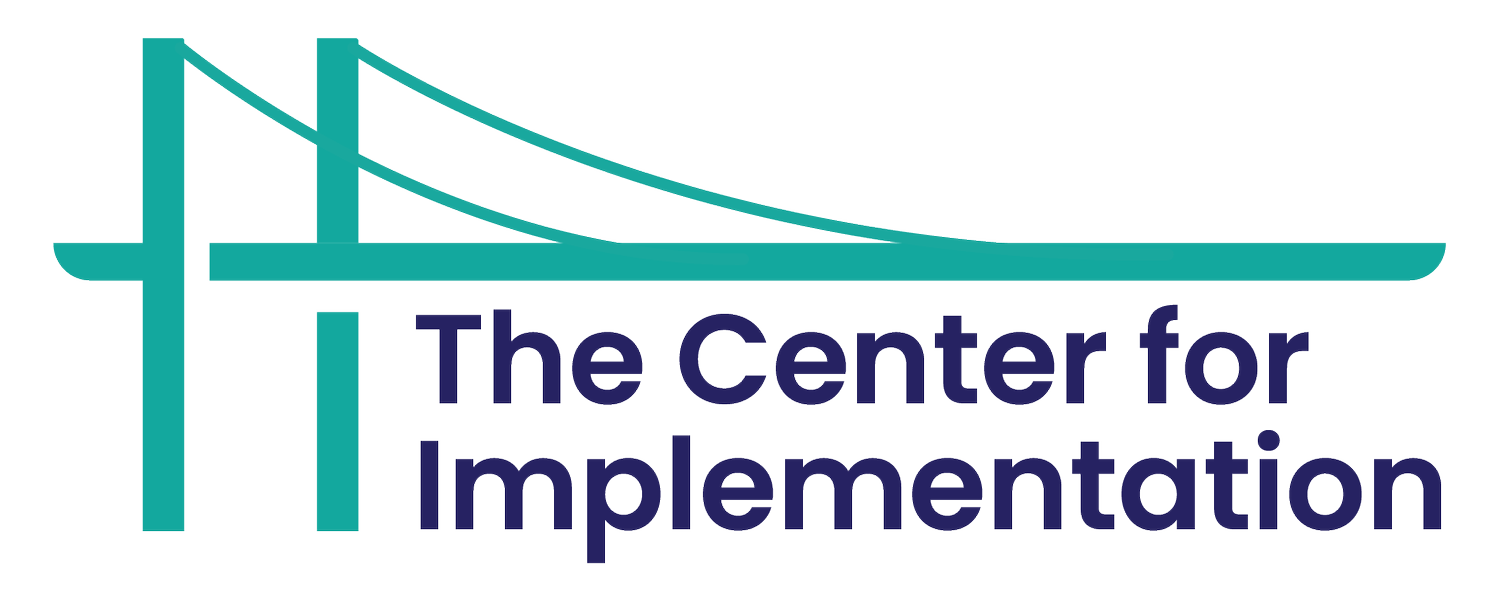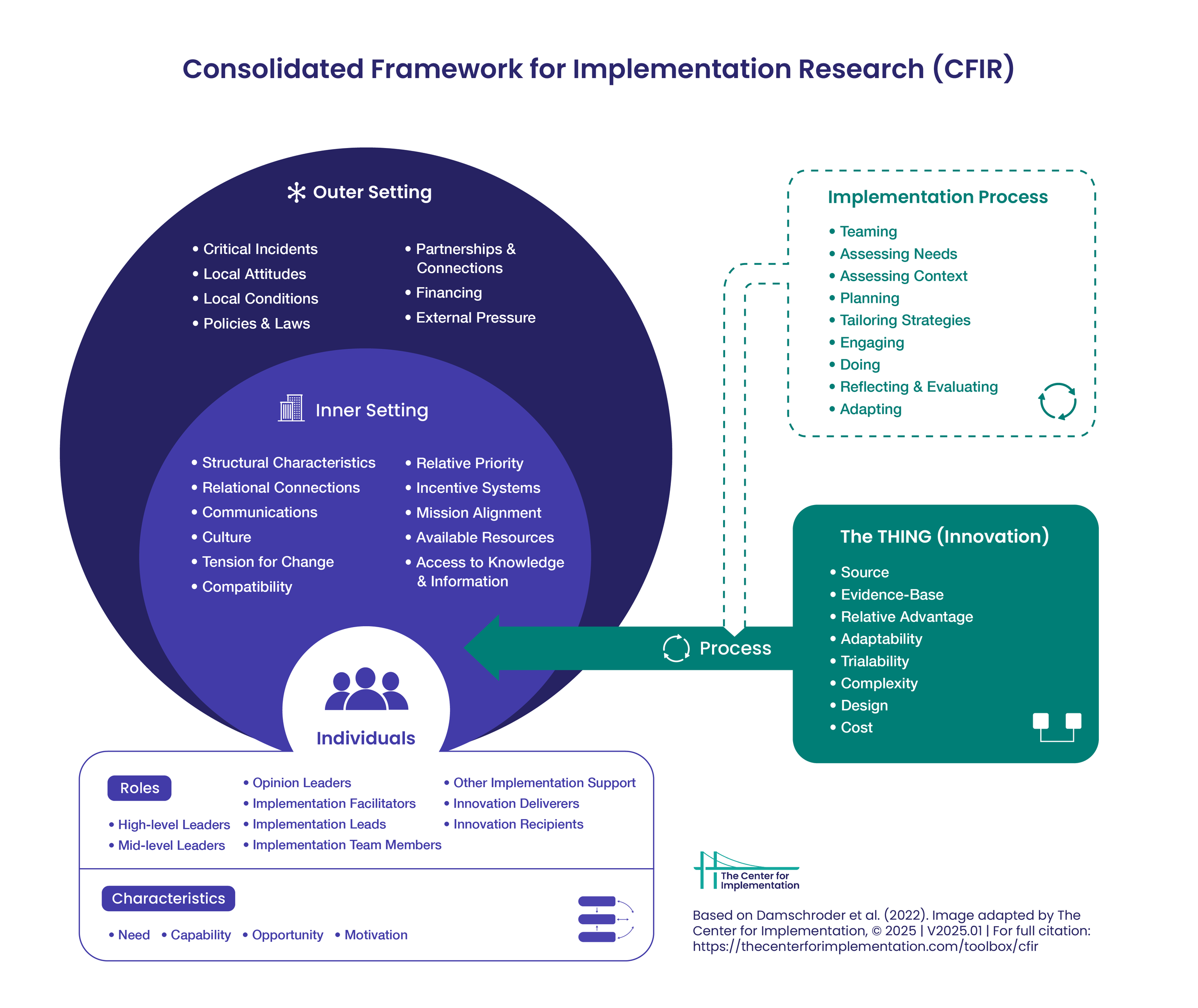Consolidated Framework for Implementation Research (CFIR)
This image is a diagram adapted from the updated The Consolidated Framework for Implementation Research (CFIR). The CFIR is a comprehensive framework that provides a structure for understanding and analyzing contextual factors. The diagram consists of five core domains, which we have adapted to align with our audience of implementation professionals.
⚠️ As of July 11, 2025 this image was updated to reflect the wording from the Consolidated Framework for Implementation Research.
You're welcome to adapt the CFIR image! We just ask that you keep the in-image citation and full citation.
🔍 Find me in Implementation, Spread, and Scale
Image specifications
Image adapted from “The updated Consolidated Framework for Implementation Research based on user feedback” by Laura J. Damschroder, et al.
Image concept and development by Drs. Sobia Khan and Julia E. Moore
Image design by Valentina Gastaldo
How to cite this image (APA Style)
CFIR 2.0. Adapted from Damschroder, L. J., Reardon, C. M., Widerquist, M. A. O., et al. (2022). The updated consolidated framework for implementation research based on user feedback. Implementation Science, 17, 75. https://doi.org/10.1186/s13012-022-01245-0. Image adapted by The Center for Implementation, © 2025. Version: V2025.01. https://thecenterforimplementation.com/toolbox/cfir
Translations
This image is available in the following languages:
-
Dieses Bild ist ein Diagramm, das dem aktualisierten Consolidated Framework for Implementation Research (CFIR) entnommen wurde. CFIR ist ein umfassendes Framework, das eine Struktur für das Verständnis und die Analyse von Kontextfaktoren bietet. Das Diagramm besteht aus fünf Kerndomänen, die wir an unsere Zielgruppe der Implementierungsexpert:innen angepasst haben.
📥 Bild herunterladen: Consolidated Framework for Implementation Research (CFIR)
Übersetzung auf Deutsch durch Lisa Kästner, Sonja Baumann und Franziska Zúñiga, Pflegewissenschaft, Department Public Health, Universität Basel; Ursina Wälchli, Saskia Oesch und Rahel Naef, Institut für Implementation Science in Health Care, Universität Zürich; und Thekla Brunkert, Fakultät für Gesundheitswissenschaften und Medizin, Universität Luzern, Schweiz

